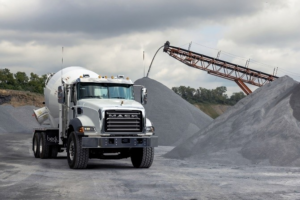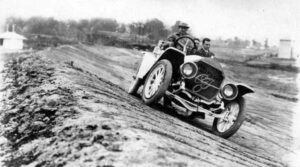If you operate a commercial trucking company, you’ve been there — getting that call from a driver or law enforcement agency alerting you to a big “oops!” No matter how seasoned your driving force is, there comes a time when an accident occurs.
This is why safety is the No. 1 concern in the trucking industry.
Accidents are a major expense — and not just in terms of insurance premiums. Accidents cost property damage, bodily injury and even lives.
A proactive approach to safety and accident mitigation is the best way to stay ahead in what is much more than a game. This requires carriers to consider their comprehensive accident response — and it’s what insurers look for when they consider your premiums and make decisions about underwriting your company.
Primary concerns for insurers
According to Sarah Goodwin of the Marsh McLennan Agency, when considering a motor carrier and its claims, insurers are concerned about three primary factors — claims uncertainty, auto claim settlements, and market appetite and capacity.
“Claims uncertainty is simply that claims continue to grow more complex in nature and cost more to resolve,” she said. “In other words, it’s difficult to predict the outcome and the cost of claims.”
This factor alone makes insurance underwriting a complicated process.
Add to that auto claim settlements that are notoriously high due to “creative plaintiff attorneys” and a market in which insurance companies are more selective and limiting in how much exposure they want to insure, and you have a situation that creates a volatility in the insurer-carrier relationship.
The good news? This volatility can be reduced when a carrier employs an accident response system that emphasizes documentation.
“You should never get a call from your insurance company saying, ‘Hey, this third party called in and said there was an incident,’” Goodwin said. “You should be reporting any and all incidents to your agent or broker, and your drivers should do the same.”
Note that she said ALL incidents — not just the big ones. After all, being proactive means taking hold of the situation before it takes hold of you.
Accidents don’t happen on a schedule. Circumstances always vary, and each driver will react to a given situation differently. A driver’s ability to obtain the type of documentation both you and your insurance company need will also vary.
The K.I.S.S. principle
While training is important, all the training in the world isn’t going to prepare a driver for an unknown event bringing an unknown set of circumstances. This is where the K.I.S.S. (“keep it simple, silly”) principle can be your greatest ally in determining what information is most important in a given situation, according to the experts at the Marsh McLennan Agency.
For carriers, a primary part of the accident response process is to provide drivers with the tools they need BEFORE an accident occurs. Each truck in your fleet should be equipped with an accident response kit. The most important part of this kit is a checklist of what information and paperwork is needed to accurately document and report the accident.
Keep in mind that the details a driver might remember clearly immediately after the accident will begin to fade and shift as days pass. A carrier needs to ensure their personnel are skilled in analyzing both types of reports.
Set up an accident hotline
Post-accident response from a carrier standpoint should emphasize 24/7 coverage of an accident hotline. Someone should always be available to take a call from a driver who needs to report an incident.
It’s also important that the person answering the hotline is trained to handle drivers when they’re caught in stressful situations. A driver’s frame of mind following a property damage accident is going to be far different from one involving a bodily injury — or even worse, a fatality. Some counseling instincts are necessary if the person answering the driver’s call is going to handle diverse circumstances.
Accident response kit
An accident response kit should be designed to streamline the documentation process for the driver and to help them accurately record what happened.
Typically, this is presented as an accident response form, often a two-sided document. On the front of the form you should provide a clear list of the do’s and don’ts all drivers need to follow in the event of an accident.
Before you start on that list, keep this in mind: The list should always start with reassurance. Make sure the first thing your driver realizes is that you are concerned about them and that you care for their physical and emotional well-being.
Following those words of encouragement, provide a set of tips. Despite training, don’t expect your drivers to have these tips memorized. Again, the stress of the circumstances will tax both nerves and memories.
Tips for drivers in the event of an accident include:
- Get a photo of the accident scene from the driver’s seat, especially if no vehicle has been moved.
- Check on the well-being of other people involved in the accident. DO NOT render medical aid unless you are certified to do so.
- Call 911 and provide the exact location of an accident and information regarding property damage or injuries.
- DO NOT take responsibility for the accident. In fact, avoid apologizing and even talking to others involved about what happened. Limit information to comments such as “EMS is on its way.”
- Call accident response support, and expect someone to answer the phone with a checklist of questions you may have to answer.
- Secure the scene. With the tools at your disposal, put on your hi-resolution vest, place flares or triangles, and await first responders outside your vehicle (if it’s if safe to do so).
- DO NOT speak to anyone about the accident other than your company representative and law enforcement officials.
- Once law enforcement clears the scene, obtain paperwork. Do not leave the scene until you are advised to do so by the authorities.
- Before leaving the scene, send all documentation to the accident response staff member with whom you have been communicating. Await further instructions.
On-scene photos
An important part of the documentation process is photographs. Every accident response kit should include a disposable camera a driver can use to take photographs of all angles of the scene, just in case the driver’s smartphone is lost or damaged in the accident.
Instruct drivers to take photos from each corner of the accident site, as well as both sides, a front and a rear view, at minimum. This is a total of eight photographs per accident. Do not ignore obtaining photos at all angles just because only one side of your vehicle was involved.
Both your insurance company and your staff will need copies of everything the driver prepares at the scene — and all drivers should be ready for follow-up discussions soon after the accident occurs.
If your trucks are equipped with forward-facing cameras (if they’re not, it’s time to seriously consider making the investment), any footage preceding and during the incident can be of great value to law enforcement and your insurer. This footage can often clear a driver who was not at fault.
In any event, don’t wait too long to complete documentation about any accident. Being proactive is the key to accident mitigation and showing due diligence is something your carrier will look toward when considering how to respond to the individual accident as well as set premiums for your carrier in the future.
Since retiring from a career as an outdoor recreation professional from the State of Arkansas, Kris Rutherford has worked as a freelance writer and, with his wife, owns and publishes a small Northeast Texas newspaper, The Roxton Progress. Kris has worked as a ghostwriter and editor and has authored seven books of his own. He became interested in the trucking industry as a child in the 1970s when his family traveled the interstates twice a year between their home in Maine and their native Texas. He has been a classic country music enthusiast since the age of nine when he developed a special interest in trucking songs.








